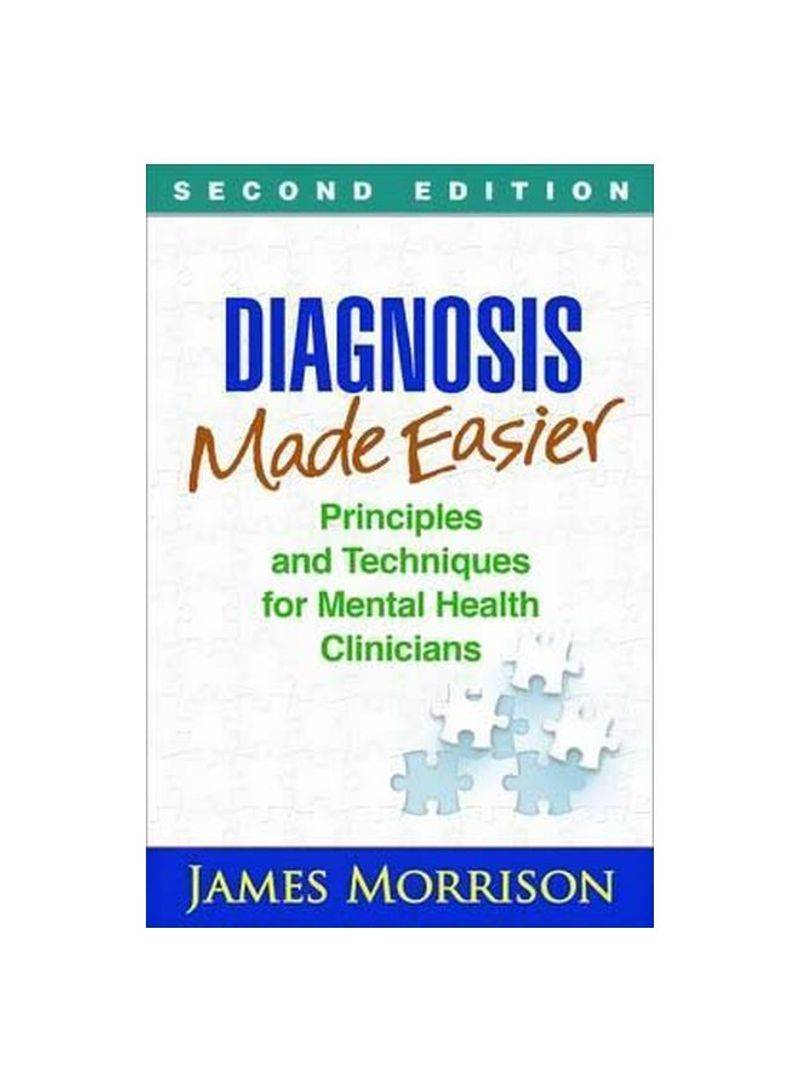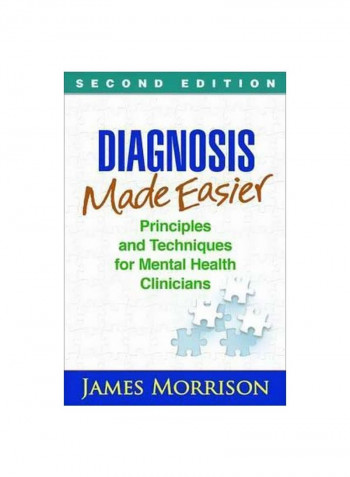Diagnosis Made Easier, Second Edition : Principles And Techniques For Mental Health Clinicians Paperback
Recommend
Sort by
Rating
Date
Specifications
Author 1
James Morrison
Book Description
This popular practitioner guide and course text takes the reader step by step through diagnostic decision making in mental health. Acclaimed for both the clarity of his writing and his clinical expertise, James Morrison provides principles and decision trees for evaluating information from multiple sources and constructing a valid, clinically useful working diagnosis. More than 100 vivid vignettes--from the straightforward to the toughest cases--illustrate the practical application of these methods. Essential topics include developing a differential diagnosis and dealing with comorbidity. New to This Edition *Revised throughout for DSM-5. *Updated resources and suggested readings. See also Morrison's DSM-5 (R) Made Easy, which explains DSM-5 diagnoses in clear language, illustrated with vivid case vignettes; The First Interview, Fourth Edition, which presents a framework for conducting thorough, empathic initial evaluations; and The Mental Health Clinician's Workbook, which uses in-depth cases and carefully constructed exercises to build the reader's diagnostic skills.
ISBN-10
1462529844
ISBN-13
9781462529841
Language
English
Publisher
Guilford Publications
Publication Date
17/Jan/17
Number of Pages
322
About the Author
James Morrison, MD, is Affiliate Professor of Psychiatry at Oregon Health and Science University in Portland. He has extensive experience in both the private and public sectors. With his acclaimed practical books--including DSM-5 Made Easy; Diagnosis Made Easier, Second Edition; The First Interview, Fourth Edition; Interviewing Children and Adolescents, Second Edition; When Psychological Problems Mask Medical Disorders, Second Edition; and The Mental Health Clinician's Workbook--Dr. Morrison has guided hundreds of thousands of mental health professionals and students through the complexities of clinical evaluation and diagnosis.
Editorial Review
This second edition is a welcome resource for students and residents and their instructors, as well as for practicing clinicians. Written in an easy-to-read, eloquent style, the book guides the reader through decision trees that simplify the complex process of making a diagnosis. It is filled with interesting case examples and handy roadmaps, and is updated for DSM-5.--Richard Balon, MD, Department of Psychiatry, Wayne State University "Morrison is an excellent writer, and Diagnosis Made Easier, Second Edition, is an easy read filled with useful clinical pearls. Numerous cases illustrate over 20 diagnostic principles. This book is an excellent choice for mental health trainees. The emphasis on syndrome identification can be quite helpful when undertaking a diagnostic evaluation."--David L. Dunner, MD, Director, Center for Anxiety and Depression, University of Washington "Diagnosis Made Easier, Second Edition, retains what made the first edition so useful, while fully updating it for DSM-5. It is well written, engaging, and filled with practical tips and rich illustrative examples, both from clinical practice and popular culture. The emphasis is on core principles that are essential for sound diagnostic decision making. Although this book is particularly well suited for courses on psychodiagnostic assessment, experienced practitioners will find it useful, as well."--Martin M. Antony, PhD, ABPP, Department of Psychology, Ryerson University, Toronto, Ontario, Canada "Too often, research and theory seem divorced from practice and experience. Morrison's book is a joyful reunion of these contrasting perspectives. In clear prose, he walks us through guiding principles and heuristics that focus our attention on key diagnostic issues while building a scaffolding that keeps the myriad details organized. He demystifies how to meet the client as a person, understand their needs, and meld that with evidence-based assessment and treatment. If you teach more structured approaches to diagnostic interviewing, Morrison provides the context to make the ideas engaging. If you teach more open-ended, unstructured formats, then the skills and concepts provide a crucial core for clinical practice. I wish I'd had this book when I was in graduate school!"--Eric A. Youngstrom, PhD, Professor of Psychology and Neuroscience, and Psychiatry, and Acting Director, Center for Excellence in Research and Treatment of Bipolar Disorder, University of North Carolina at Chapel Hill



